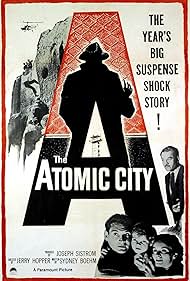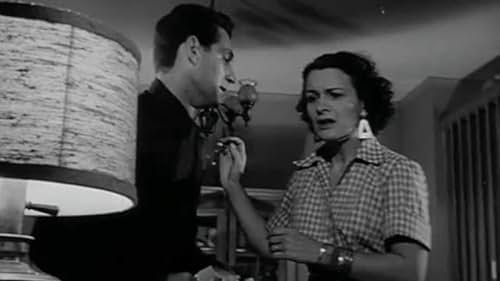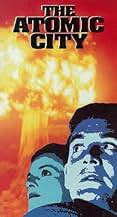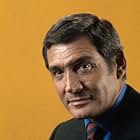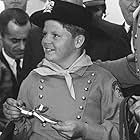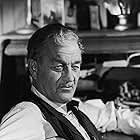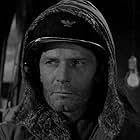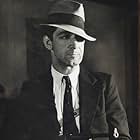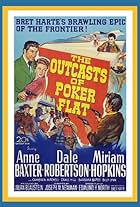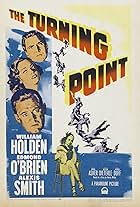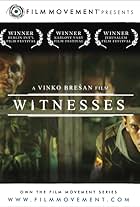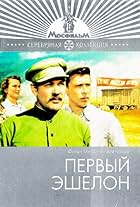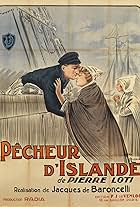An atomic scientist's son is kidnapped by enemy agents.An atomic scientist's son is kidnapped by enemy agents.An atomic scientist's son is kidnapped by enemy agents.
- Nominated for 1 Oscar
- 1 nomination total
George Lynn
- Robert Kalnick
- (as George M. Lynn)
Don Brodie
- FBI Agent
- (uncredited)
Norman Budd
- David Rogers
- (uncredited)
Mary Carroll
- Marion Fenton
- (uncredited)
- Director
- Writer
- All cast & crew
- Production, box office & more at IMDbPro
Storyline
Did you know
- TriviaFilm debut of Gene Barry.
- GoofsWhile the voice-over at the beginning talks about "a remote site in New Mexico" (i.e., Los Alamos), the footage shown is actually that of the gaseous diffusion plant ("K-25") at Oak Ridge, Tennessee (producing enriched uranium, U-235).
- ConnectionsFeatured in TJ and the All Night Theatre: Snow Creature + the Atomic City (1978)
Featured review
Check out the first 20 minutes even though the suspense hasn't yet kicked in. We get a pretty good look at super-secret Los Alamos just a few years after the big bomb test that helped end WWII. Except for the tight security, it looks unthreatening enough. Note how it's a TV repairman, an obvious regular guy, who takes us through security. Once through, it's like any-town-USA, nice homes, quiet streets, kids going to school, and a family TV on the blink. Later on we see little Tommy and little Peggy frolicking along streets lined with impressive looking facilities separated by locked gates. The movie appears to be saying, "Okay, we're tough, only because we have to be. But, basically, we're still just folks."
Now, I expect that was a comforting message to Cold War audiences still not used to government's "dooms-day" research. It's a clear effort at popular reassurance. The one darker note is when Tommy's mother (Clarke) worries about her son's mental state. He doesn't say, "When I grow up"; instead, it's, "If I grow up". That note of doubt not only reflects a Los Alamos reality, but also a national one that in 1952 had just seen footage of the apocalyptic H-bomb. Note too, how professionally FBI agents are portrayed, a standard feature of McCarthy era fare. When brute force is needed, it's not they, but private citizen Gene Barry who thrashes out the informationan early version, I suppose, of modern era "rendition".
Once the kidnapping occurs, the suspense doesn't let up. The intrigue is nicely handled with colorful LA locations that keep us guessing. The climactic scenes around the cliff dwellings may not be plausible as a hiding place, but the view of northern New Mexico is great. Then too, the ancient stone apartments amount to one of the more exotic backdrops of the decade. Note also the extensive use of the police helicopter just coming into use as a law enforcement tool. Among an otherwise subdued cast, Nancy Gates remains a sparkling presence as teacher Ellen Haskell. Never Hollywood glamorous, she was still a fine unsung actress and winning personality. I also expect this was one of director Hopper's more successful movie efforts, and though people have since gotten used to the nuclear threat, the movie remains a revealing and riveting document of its time.
Now, I expect that was a comforting message to Cold War audiences still not used to government's "dooms-day" research. It's a clear effort at popular reassurance. The one darker note is when Tommy's mother (Clarke) worries about her son's mental state. He doesn't say, "When I grow up"; instead, it's, "If I grow up". That note of doubt not only reflects a Los Alamos reality, but also a national one that in 1952 had just seen footage of the apocalyptic H-bomb. Note too, how professionally FBI agents are portrayed, a standard feature of McCarthy era fare. When brute force is needed, it's not they, but private citizen Gene Barry who thrashes out the informationan early version, I suppose, of modern era "rendition".
Once the kidnapping occurs, the suspense doesn't let up. The intrigue is nicely handled with colorful LA locations that keep us guessing. The climactic scenes around the cliff dwellings may not be plausible as a hiding place, but the view of northern New Mexico is great. Then too, the ancient stone apartments amount to one of the more exotic backdrops of the decade. Note also the extensive use of the police helicopter just coming into use as a law enforcement tool. Among an otherwise subdued cast, Nancy Gates remains a sparkling presence as teacher Ellen Haskell. Never Hollywood glamorous, she was still a fine unsung actress and winning personality. I also expect this was one of director Hopper's more successful movie efforts, and though people have since gotten used to the nuclear threat, the movie remains a revealing and riveting document of its time.
- dougdoepke
- Feb 8, 2009
- Permalink
- How long is The Atomic City?Powered by Alexa
Details
- Release date
- Country of origin
- Language
- Also known as
- Die Stadt der tausend Gefahren
- Filming locations
- Los Angeles County/USC Medical Center - 1200 N. State Street, Los Angeles, California, USA(brief shot of entrance in opening montage)
- Production company
- See more company credits at IMDbPro
- Runtime1 hour 25 minutes
- Color
- Aspect ratio
- 1.37 : 1
Contribute to this page
Suggest an edit or add missing content

